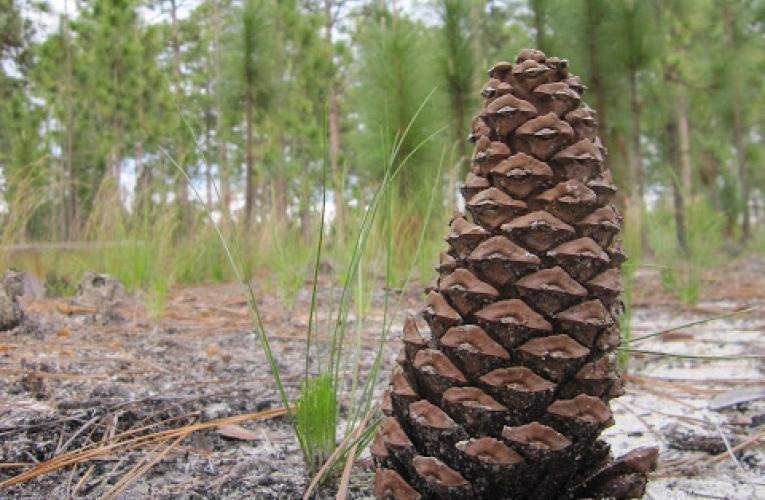Reviewed by Alex SmithMay 3 2022
The ability of a forest to regenerate after droughts, wildfires or other disturbances is largely dependent on seed production. The findings of two recent investigations carried out by Duke University researchers could help foresters recover and replant after these disasters by offering new information on which tree species produce more seeds and how their productivity varies by location.

Image Credit: Bryan Mudder, U.S. Forest Service.
Knowing which species produce more seeds and in which habitats helps us better understand how to manage for seed trees and optimize forest regeneration, especially in areas where seed is limited, like much of the western US.
James S. Clark, Nicholas Distinguished Professor, Environmental Science, Duke University
James S. Clark was the corresponding author on both papers.
The studies were published on May 2nd, 2022, in the journal Nature Communications and on April 23rd, 2022 in Ecology Letters journal.
The research findings come at a time when many individuals are concerned about the ability of several forests to recover from increasingly frequent and intense droughts and wildfires caused by climate change, as well as increased harvesting to meet rising human demand for wood and other timber products.
The Biden Administration announced a new initiative on April 25th, 2022, in which the Departments of Agriculture and Interior will collaborate with states, tribes and the private sector to expand federal cone and seed collection and seedling nursery capacity, with the objective of expanding forest replanting programs, particularly in Western timberlands burnt by recent wildfires.
Our findings, which are the first to establish global patterns in tree seed production and quantify how many seeds different species produce under different conditions, could be very useful for these types of forest management and renewal initiatives worldwide.
James S. Clark, Nicholas Distinguished Professor, Environmental Science, Duke University
The analyses combine data on seed production for more than 700 species across the globe, from the tropics to the subarctic, and reveal important information on how tree fecundity and seed supply influence forest regeneration and biodiversity in various climate zones, Clark continued. This understanding is crucial in comprehending the evolution of forest species and how they respond to losses.
One of the most surprising results of the research is that trees in the wet tropics produce 250 times more seeds than trees in dry boreal forests.
The actuality that there are many more big trees in the wet tropics, and they produce 100 times more seeds on average than trees of the same size in boreal regions, could explain why tropical forests have such intense species interactions.
Another striking observation is that seed production is not constrained by seed size. This refutes the widely held belief that species that produce larger seeds should produce proportionately fewer of them, making them more susceptible to loss.
Not true. While trees that have larger seeds do produce fewer than trees with small seeds, we found they nonetheless produce more than previously believed. When you multiply the number of seeds by seed size, you find that the big-seed species are generating more reproductive output overall.
James S. Clark, Nicholas Distinguished Professor, Environmental Science, Duke University
Another fascinating finding is that gymnosperms, or conifers, produce fewer seeds than angiosperms, or flowering trees. This could be because gymnosperms expend much more energy on making protective cones for their seeds. Clark believes that knowing this will aid in the replanting and management of many of the Western forests that have been ravaged by recent wildfires.
It could also provide insight into Darwin’s famous “abominable mystery” of why so many flowering plant species arose during the Cretaceous Period, 145.5 million to 65.5 million years ago, while most other species (aside from dinosaurs) lagged behind.
Clark remarks, “This is the first time we’ve had evidence that links seed production directly to species fitness. It may be that high seed production is what made flowering plants fit enough to flourish and evolve under the trying conditions of the Cretaceous, just as it does today.”
The Nature Communications paper included contributions from scientists of 70 different institutions. The National Science Foundation, the Belmont Forum, NASA and France’s Programme d’Investissement d’Avenir (“Make Our Planet Great Again”) initiative provided the majority of the funding.
Scientists from 67 institutions contributed to the Ecology Letters paper. Principal funding came from the National Science Foundation, the Belmont Forum, and France’s Programme d’Investissement d’Avenir (“Make Our Planet Great Again”) initiative.
Clark has a secondary faculty appointment at the Université Grenoble Alpes through the Institute National de Recherche pour l’Agriculture, l’Alimentation et l’Environnement, in addition to his primary faculty appointment at Duke’s Nicholas School.
Tong Qiu, a postdoctoral associate at Clark’s Nicholas School was the lead author of the Nature Communications paper.
Journal References:
- Qiu, T., et al. (2022) Limits to reproduction and seed size-number trade-offs that shape forest dominance and future recovery. Nature Communications. doi.org/10.1038/s41467-022-30037-9.
- Journé, V., et al. (2022) Globally, tree fecundity exceeds productivity gradients. Ecology Letters. doi.org/10.1111/ele.14012.